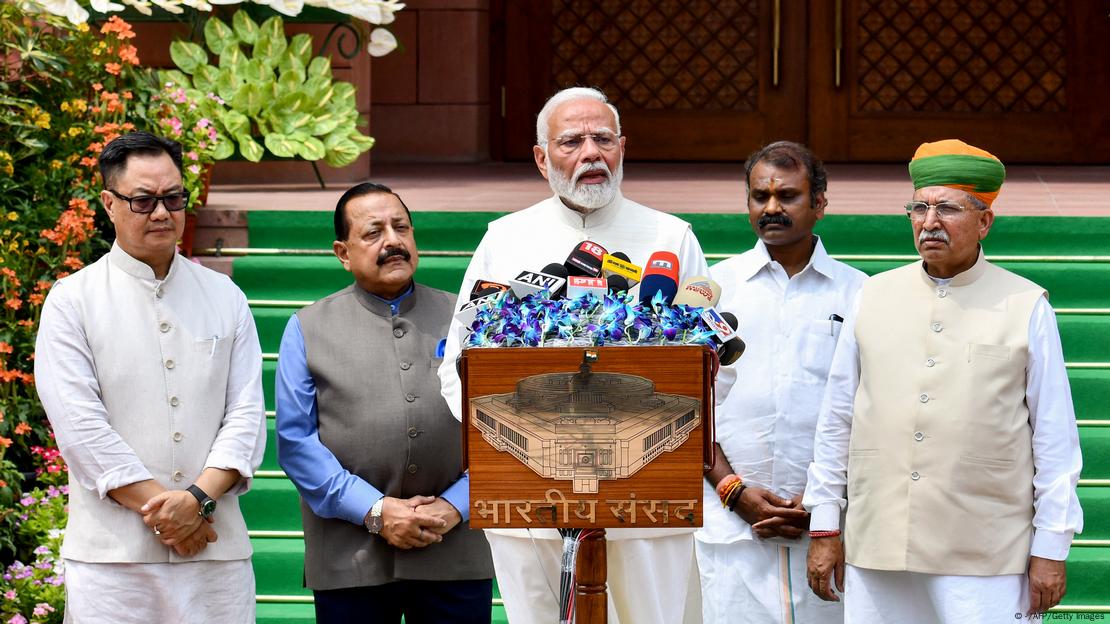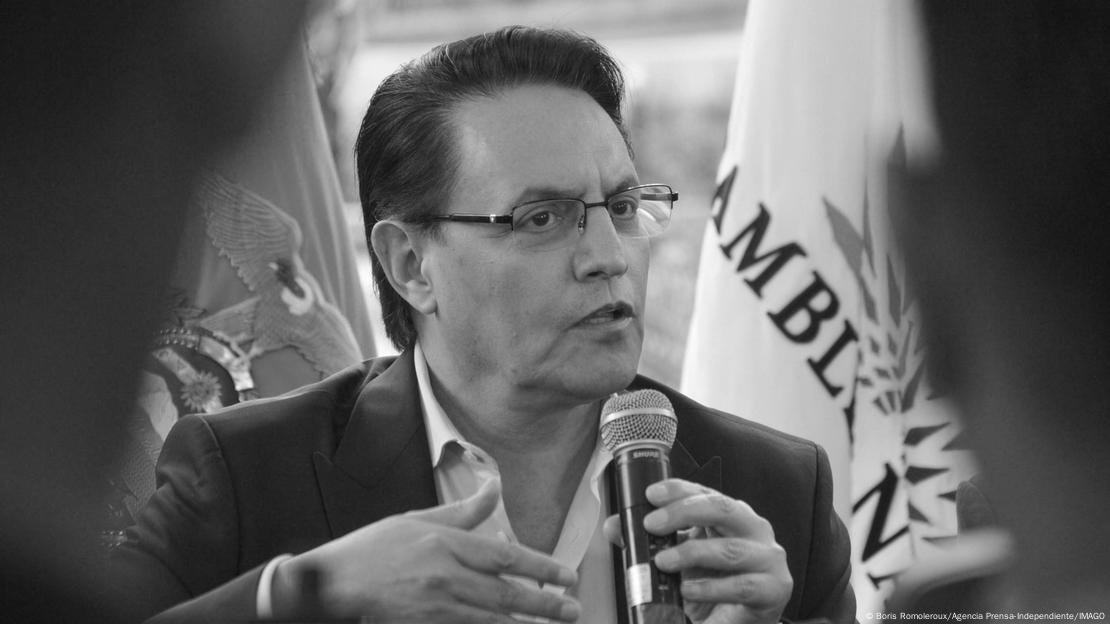While the war in Gaza rages on, militant Jewish settlers are pushing further into the Palestinian heartland
AUTHOR
Edo Konrad
NEWS | 07/11/2024

On 28 February 2024, some four months into Israel’s war on the Gaza Strip, dozens of young Israeli settlers saw an opportunity to set a precedent. Nearly 20 years after Ariel Sharon’s government evacuated the Jewish settlements from Gaza, a small number of them — some reportedly carrying construction materials, while at least two were armed with the kind of rifles used by the military — stormed the Erez Crossing in a first attempt to rebuild Jewish settlements.
Edo Konrad is a journalist and the former editor-in-chief of +972 Magazine.
“We came here [because] we wanted to go home. I live in a community of deportees from Gush Katif, and we wanted to go back”, one 18-year-old settler told Local Call. “I would like the government to understand [what] the majority of the people already understood: We are here. It is ours … We need to go to Gaza, destroy all the terror there, and build there ourselves”, said another.
The settlers were successful — at least momentarily. They managed to erect a makeshift outpost, not unlike the kind seen in the occupied West Bank, which they named Nisanit Hachadasha (“New Nisanit”) after one of the settlements of Gush Katif, the Jewish settlement bloc that was evacuated as part of the 2005 disengagement plan. But unlike the disengagement, in which police and soldiers forcibly removed 9,000 settlers from a colony built in the heart of the Palestinian civilian population, this time Israeli security forces stood nearby and provided protection as the settlers swarmed. It would take several hours before the police arrived to remove them.
To the untrained eye, Nisanit Hachadasha might appear as a form of marginal political theatre, not to be taken too seriously. But the event in many ways marked the culmination of a vision that has been percolating among the settler movement for decades — one that could only be realized through a paradigm-shifting explosion of violence such as all-out war or ethnic cleansing, permanently thwarting the establishment of a Palestinian state and turning the settlers into the masters of the land.
Israel’s unprecedented onslaught and devastation in the Gaza Strip, which came as a response to the gruesome Hamas attacks on Southern Israel and the capturing of hundreds of hostages on 7 October, has provided the settlers with precisely such an explosion. While the mood among mainstream Israeli society is one of painful sacrifice for a “necessary” and “just” war of defence, the settlers and their representatives in the Knesset have had a hard time disguising their celebratory mood. They believe their moment to make history has come. Indeed, the question is not only whether they will succeed, but what kind of threat potential failure could pose to their entire project.
National Religious Revanchism
On the morning of 7 October, as the horrors of the Hamas attacks were becoming clearer (1,200 Israelis killed, 252 hostages taken, and half-a-dozen kibbutzim destroyed), Israel’s Settlements and National Projects Minister Orit Strock spoke before the cabinet. “First of all, happy holiday”, the far-right settler reportedly said at the top of her remarks, referring to the Jewish holiday of Simchat Torah. “A happy holiday this will not be”, Prime Minister Benjamin Netanyahu shot back, reflecting the gap between him and the fundamentalist partners key to holding his government together.
As the war dragged on, Strock would come to symbolize what can only be described as a defiant glee that has characterized the National Religious movement since the November 2022 elections brought them to the height of their power, and certainly since the beginning of the war. In May 2024, Strock openly opposed the “terrible” ceasefire agreement, the approval of which would be tantamount to a betrayal of IDF soldiers and Israel’s war aims. In response to American efforts to negotiate a ceasefire, Strock said that the US “does not deserve to be called a friend of the State of Israel”. In early July, she told a group of settlers that Israel had entered a “miraculous” era — the miracle in question being settlement expansion.
She is by no means alone, and the settler movement is certainly not the only segment of Israeli society agitating for more carnage. The entire right wing, from Netanyahu’s allies in the media to right-wing Haredi journalists, is veritably euphoric, joyfully calling for the expulsion of Palestinians and the annihilation of Gaza as we know it.
That euphoria extends deep into mainstream Israeli society, which was shocked by the sheer brutality of Hamas’s attack, enraged by the government and army’s inability to prevent it, and now feels abandoned and betrayed by the world during the Jewish state’s most difficult hours. In this atmosphere, genocidal rap songs have topped the pop charts, large-scale civilian initiatives have been deployed to justify Israel’s ruthlessness, artists who were once associated with multiculturalism have embraced far-right talking points, calls to end the war are often seen as tantamount to treason, and anti-government protests have not reached anywhere near the numbers seen during the movement against the right-wing judicial coup last year.
Were it not for the fracturing of the Israeli public over Netanyahu’s political motivations for quashing any ceasefire deal and the army’s outwardly stated failure to neither defeat Hamas nor rescue the vast majority of hostages through military operations, it is not hard to imagine that the centre and much of the centre-left would still support Netanyahu’s deliberately vague goal of “total victory”. Yet since 7 October, Religious Zionists (the ideology of the vast majority of West Bank settlers) have been the most assiduous supporters of the war and its potential for remaking the country, both demographically and geographically.

Religious Rabbis have publicly and unashamedly celebrated the war and the possibilities it opens up for remaking the political order. Settler media outlets such as the radical TV channel Arutz 7 and the more dignified weekly Makor Rishon, widely regarded as the mouthpiece of the settler elite, have been almost unanimous in their celebratory demands for the permanent re-occupation and re-settlement of Gaza. Religious soldiers fighting in the strip — particularly “Hardalim”, far-right nationalists whose political beliefs are imbued with religious zealotry — have used the current war to remake the army in their image and influence soldiers with extremist rhetoric.
Moshe Feiglin, a far-right settler and former member of Knesset for the ruling Likud party, invoked Adolf Hitler while describing what should be done to Palestinians in Gaza. Bezalel Smotrich, Israel’s finance minister and one of the most powerful figures in the current government, has publicly demanded permanent military control of Gaza, rejected any accountability for the events of 7 October, and told hostage families that any deal with Hamas to bring back their loved ones would be akin to “collective suicide”.
In Gaza, meanwhile, dozens of soldiers in the Gaza Strip, including officers, have been documented waving orange flags associated with the movement to resettle Gush Katif, displaying posters announcing the renewal of settlements, or calling for the re-establishment of Jewish communities there.
Never have they had this kind of influence over Israeli politics, and Netanyahu is afraid of them bringing down the government, which gives them enormous influence and power to keep the war going.
It is no surprise, then, that the attempt to build a settlement outpost in northern Gaza came only one month after 15 members of the governing coalition, including Smotrich, participated in the “Conference for Israel’s Victory” in Jerusalem, where they demanded the Israeli government promote the re-establishment of settlements in the Gaza Strip. At a time when Israeli soldier casualties were piling up in Gaza, settler leaders were filmed ecstatically dancing. On the wall of the conference hall, a giant map of Gaza could be seen dotted with the locations of potential new settlements to be built on the ruins of cities, villages, and refugee camps. What would happen to the 2 million Palestinians living in the strip was not discussed. A similar conference promoting the settlement of southern Lebanon took place in mid-June.
Within months, the so-called Lobby for the Settlement of the Gaza Strip held its first meeting in the Knesset, where Likud MK Tzvika Fogel called on Israel to “turn Shifa Hospital into a 7 October museum” and Religious Zionist Party member Zvi Sukkot, chairman of the Knesset Subcommittee for Judea and Samaria [West Bank], pledged that one day “our children will play in the streets of Gaza”.
On the ground, settlers and other right-wingers have channelled their power into blocking humanitarian aid trucks and at times destroying cargo to prevent their passage into the Gaza Strip, where the UN says there is an ongoing “full-blown famine”. In some of these cases, police officers simply looked on, doing nothing to stop them.
For Meron Rapoport, a veteran Israeli journalist and editor at Local Call, the settler right’s ecstasy should be taken with a grain of salt. Despite the warmongering and ongoing radicalization, the Israeli public is not interested in sending its children to protect messianic settlers in Gaza. “On the one hand, the influence of the settlers is at its height”, says Rapoport. “Never have they had this kind of influence over Israeli politics, and Netanyahu is afraid of them bringing down the government, which gives them enormous influence and power to keep the war going.” On the other hand, he says, the mainstream Israeli public remains “completely unwelcoming” to the settlers’ messianic vision, particularly after nine months of mass protests against the far right’s attempts to ram through a judicial coup that would neuter the power of Israel’s legal institutions and make it exceedingly difficult to dislodge the Right from power.
According to Rapoport, the settlers know that Israel will not expel the Palestinians from Gaza wholesale, but rather are content with levelling the area and rendering it unliveable, which he says will catalyse a Palestinian exodus. “They believe Israel will create such horrible conditions in Gaza in order to keep the chaos going. Knowing how things work in the West Bank, the settlers believe that the moment the army controls all of Gaza, they will be able to establish communities. If there is no ceasefire deal, and we’re going toward a long war of attrition in Gaza, there is a high likelihood of that happening.”
Nevertheless, he believes the settlers are facing a pivotal moment.
The Right understands that after the war, whenever that will be, the main issue will be the Palestinians after years that they were ignored by the entire world. The settlers fear that a potential future government led by Benny Gantz [Netanyahu’s chief political rival] will accept the premise of a two-state solution, flushing 50 years of work down the drain. They were a step away from realizing God’s plan of emptying the land of its non-Jewish inhabitants and returning it to its “original owners”, and all of a sudden the country is heading toward a conversation on two states? This is the greatest threat to their political project and they won’t have it.
A Long Time Coming
To understand the settler movement in 2024, one must go back not only to its roots, but to the traumas that continue to haunt it today. Up until 1967, the National Religious or Religious Zionist movement was small and relatively powerless, adjoining the ruling Labour Zionist Mapai party that dominated Israel’s political, economic, and cultural order in the early years of the state. But Israel’s breakneck victory during the 1967 War and subsequent occupation of the West Bank, Gaza, East Jerusalem, the Golan Heights, and the Sinai Peninsula — tripling the size of the state — injected a sense of euphoria into the national consciousness. This was particularly true of the National Religious community, which viewed the West Bank, which it calls “Judea and Samaria”, as the cradle of Jewish civilization and the historical heartland of the Jewish people.
The newly occupied territories and their residents were placed under military rule. While East Jerusalem and the Golan Heights were illegally annexed, Israel maintained what would come to resemble a military dictatorship over the West Bank and Gaza. Debates over the fate of the territories kicked off almost immediately after the occupation began, along with government plans to thin out the population and put down any attempted rebellion by the hundreds of thousands of Palestinians who had suddenly come under an Israeli administration that denied them basic human and civil rights.
In the immediate aftermath of the war, the Israeli government under Prime Minister Levi Eshkol hesitated to endorse widespread settlement in the Occupied Territories, fearing international backlash for violating the Fourth Geneva Convention would complicate prospects for peace negotiations. Yet, as the settler population grew and established a significant presence in key areas, subsequent governments adopted more accommodating policies, providing incentives and support for settlement expansion.
While most of the first settlements in the Occupied Territories were built by secular Jews who identified with the Israeli Left, it was not long before the National Religious community began to organize itself for colonization. One of the earliest and most influential settler organizations was Gush Emunim, founded in 1974, which advocated for the establishment of Jewish communities in the heart of the West Bank and Gaza Strip. Gush Emunim attracted support from Religious Zionists who saw settlement as a fulfilment of biblical prophecy and a means to strengthen Israel’s hold on the new territories.
The settler movement expanded rapidly across the Occupied Territories throughout the 1970s and 1980s, especially after the Likud party was elected in 1977, often with government approval and financial assistance. The new settlements ranged from small outposts to large urban developments, transforming the demographic and geographic landscape of the West Bank and Gaza. By the end of the 1980s, 200,000 Israeli Jews lived in dozens of settlements and outposts across the Occupied Territories.
The 2005 disengagement represented a watershed moment — and betrayal — for the movement, one that it has been hell-bent on rectifying ever since.
The Oslo Accords signed between 1993 and 1995 posed a significant challenge to the settler movement, as Israel and the Palestine Liberation Organization (PLO) agreed, at least on paper, to Palestinian self-rule and Israeli withdrawal from large portions of the Occupied Territories. While some settlers and far-right nationalists opposed the peace process and engaged in acts of violence, including the assassination of Prime Minister Yitzhak Rabin, others reluctantly accepted the prospect of evacuation from certain areas in exchange for the promise of enhanced security and normalized relations. Nevertheless, the failure of the Camp David Summit in 2000 and the outbreak of the Second Intifada soon fuelled a resurgence of settler activism and expansionism.
The 2005 disengagement, when Israel unilaterally withdrew its military and evacuated 9,000 Jewish settlers from the Gaza Strip, represented a watershed moment — and betrayal — for the movement, one that it has been hell-bent on rectifying ever since. “The disengagement was a slap in the face. It was the first major crisis facing the settlement movement, particularly because it came from the Right rather than the Left”, says Aviad Houminer-Rosenblum, deputy director-general of the Berl Katznelson Center and a member of the Faithful Left movement. “After they were evacuated, the settlers began to turn inward and speak directly to the Israeli public — to ingratiate themselves with the mainstream.”
The new, mainstreamed settler movement, Houminer-Rosenblum recounts, sought to undo its image as an elitist, Ashkenazi-dominated, pampered segment of the population, and instead sought to form common cause with the Likud heartland, much of which is comprised of working- and middle-class Mizrahim [Israeli Jews who hail from Arab or Muslim countries, as opposed to Ashkenazim, or Eastern European Jews, who have historically comprised the Israeli upper classes]. “This allowed the settler movement to speak to ordinary secular people without having to use the language of messianism, redemption, or religious nationalism.”
Within just a few years, fundamentalist religious communities called “Torah nuclei” began sprouting up in Israeli cities and towns with relatively low religious populations, or in places where Jews and Palestinians live side-by-side, such as so-called “mixed cities”. The first victim of the intercommunal violence in May 2021 was a Palestinian resident of the city of Lod, allegedly shot dead by a member of the city’s Torah nucleus.
The killing — along with attempted expulsions of Palestinians from Jerusalem’s Sheikh Jarrah neighbourhood, attacks against worshippers at Al-Aqsa Mosque, and Hamas rocket fire from Gaza — sparked days of deadly riots and lynchings between Israeli Jews and Palestinians. Images of settlers being bused in from the West Bank to Lod, where they attacked Palestinian residents, were proof enough that Religious Zionism’s post-disengagement mission of “settling in the hearts” of the Israeli mainstream went hand-in-hand with a kind of violence Palestinians have been familiar with since the early days of the Zionist project.

“The disengagement was the big wound, and today the war and the desire to resettle Gaza is the attempt to close that circle”, Houminer-Rosenblum says.
I would be surprised if there isn’t 90-percent support among the settler movement for resettling Gaza. While the Israeli centre-left feels that its dream has been destroyed, the settlement movement feels the opposite. It is saying, “We were right all along, and now we have the opportunity to rectify the situation.” If you look at [settler] media outlets, there is wall-to-wall support for it.
By 2023, close to 520,000 settlers reportedly lived in the West Bank alone, with another 200,000 in Jewish settlements in East Jerusalem, the city Palestinians claim as their future capital. Regardless of whether they will succeed or not, the settlers’ ambitions go much further than simply re-establishing Gush Katif: they want to import West Bank-style annexation, where settler-army collusion has all but become official state policy, colonization of Palestinian land is at an all-time high, and Palestinians are left almost completely defenceless.
Escalation on All Fronts
On 23 June, the New York Times published a disturbing report that hardly made a dent in the Israeli press. According to the piece, Finance Minister Bezalel Smotrich, who also serves as a minister in the Defence Ministry with broad powers over the West Bank, was recorded at a recent meeting of settler leaders and supporters stating that the government was engaged in a secret effort to transfer more authority from the military — which has officially run the West Bank since 1967 — to the Civil Administration, the body that effectively runs the day-to-day of the occupation. In effect, this constitutes another step toward annexation and cementing formal control of the territory.
Smotrich, who has called for settling 1 million new Jews in the West Bank, is the most powerful proponent of annexation and mass expulsion of Palestinians in a far-right government that views 7 October as a once-in-a-lifetime opportunity to bury any possibility of establishing an independent Palestinian state. Yet if Smotrich sought to explode that possibility through politics, settlers on the ground in the West Bank have been just as effective.
Since 7 October, the West Bank has seen a surge of settler violence against Palestinians, particularly in Area C, which is under full military control. Palestinian officials say Israeli troops and settlers have killed at least 550 Palestinians in the West Bank since the war in Gaza began. According to Yesh Din, an Israeli human rights group that tracks violence against Palestinians, settlers have expelled at least 15 Palestinian communities totalling 800 Palestinian families from their villages.
Shahd Fahoum, a data coordinator at Yesh Din, says that in the past, soldiers assigned to protect the Palestinians would stand idly by during settler attacks. But over the last years, she says, they either actively take part in joint militias, or, particularly after 7 October, are deployed as reservists in so-called “regional defence battalions”, part of an emergency call-up that allows settlers to guard their own settlements in a time of war. Under the cover of war, members of these battalions are reportedly engaging in violence, threats, and destruction of property.
Fahoum explains how the settlers’ complete militarization and the creation of joint militias has facilitated unbridled violence against Palestinians.
Today, the soldiers enter villages and towns, and start attacking Palestinians with stones and rocks. Sometimes they set fires to cars. A lot of the time, if people in the villages come to help, the soldiers will open fire at Palestinians. Sometimes the soldiers and settlers come together. Sometimes the settlers come alone and then the soldiers attack the Palestinians who come to defend their village. The Israeli media will inevitably label this as “clashes between Palestinians and security forces”, which completely erases the reality on the ground.
Law enforcement against settler violence is almost non-existent.
You see it in the numbers. In 2023, only 6.6 percent of settlers who had cases opened against them were indicted, down from around 8 percent in the past few years. When it comes to conviction, it’s even lower. When you look at the sentences of the convicted settlers, you will rarely find an acceptable sentence in proportion to the attack. Usually its community service, or time served — a slap on the wrist.
For Fahoum, the lack of law enforcement is a deliberate feature of Israeli rule over Palestinians. “We talk a lot about settler violence as if it is the problem, but it is a symptom of the problem — the real issue is the occupation and settler colonialism. The state itself sees its settlers as a good thing for its expansionist ambitions, so it makes sense that there is less law enforcement against them.”
Like Fahoum, Hagar Shezaf, West Bank correspondent for Haaretz, sees the current surge of settler violence as the culmination of a years-long process, set in motion before this government even came into power. “When I started reporting from the West Bank in 2019, the general feeling was that few people cared about what was happening in the Occupied Territories”, Shezaf says. “We were seeing the steady growth of outposts, but there was a sense that the entire enterprise was totally normalized.”
But by mid-2021, when Netanyahu was replaced by the so-called “government of change” led by Naftali Bennett, Yair Lapid, and Benny Gantz, things had begun to shift. First, she says, came the building of Evyatar, a wildcat settlement outpost erected near the Palestinian village of Beita, which launched a protracted struggle that led to the killing of ten residents at the hands of Israeli soldiers. The settlers of Evyatar ultimately agreed to abandon the outpost, but left their structures intact. Even today, a group of soldiers continues to guard the empty buildings, laying the groundwork for the settlers’ return.
The last 25 years have seen the steep decline of any real political challenge to the settlers’ supremacy in Israeli politics.
Shezaf also notes that Gantz, who served as defence minister at the time, effectively allowed settlers to permanently return to Homesh — one of four West Bank settlements evacuated during the 2005 disengagement, and which settlers have been trying to re-establish ever since — following the killing of a settler by Palestinian gunmen in the area in December 2021. By May 2021, Shezaf notes, settlers had taken over senior command positions in the West Bank, and began outwardly proselytizing in ways that were simply not accepted previously.
In the decades after the occupation began in 1967, Israel and the settler movement were able to establish a veritable empire that has all but erased the Green Line, swallowed up Palestinian lands, and built a matrix of control through expanding settler-only roads that connect West Bank colonies to what is sometimes known as “Israel proper”. Today, despite international campaigns to boycott the settlements, there is hardly a distinction between the Israeli economy and its settler counterpart.
By the time the current government was elected in November 2022, the path was paved for what anti-occupation group Peace Now called “probably the best year” for the settlement enterprise. Coalition negotiations birthed the most nationalistic, pro-settlement agreements in Israeli history, even going so far as to state that the Jewish people had a “natural right” to the Land of Israel and making promises to expand settlement building and retroactively legalize settlement outposts that were deemed illegal even according to Israeli law. Within months, Smotrich was effectively in charge of the settlements, a record number of housing units were promoted in the West Bank, 15 illegal outposts were advanced, and the government allocated 3 billion Israeli shekels (roughly 740 million euro) for roads in settlements — constituting around 20 percent of the total budget for such investments.
Cracks in the Facade
The last 25 years have seen the steep decline of any real political challenge to the settlers’ supremacy in Israeli politics. The Zionist Left, once the dominant force in Israeli society, collapsed with the breakdown of the Oslo peace process and the spike in Palestinian armed struggle during the Second Intifada in the 2000s. Israel’s entire political spectrum would soon shift to the right.
The Israelis who remained staunch believers in a two-state settlement may still have constituted a numerical majority, but they shifted towards a political centre that prioritized issues such as cost of living, secular-Haredi relations, civil liberties, and combating political corruption. Netanyahu would return to power in 2009 with the help of the Zionist Left and the centre under the pretext of “managing” — rather than solving — the conflict. The occupation, which had been the lynchpin of Israeli politics since 1967, would only return to centre stage following last year’s attacks.
Palestinians and left-wing Israelis do not count on the Israeli public to put an end to Israeli impunity over the settlements. But can the international community still play a role? Since early February, the US, followed by the UK, EU, Canada, and France, have slapped sanctions including asset freezes and travel bans on a number of prominent settlers and settler groups suspected of committing human rights violations.

Michael Schaeffer Omer-Man, director of research for Israel-Palestine at DAWN, says the move comes after years of pressure on the US to take action against settlers, which he calls a consensus issue in the Biden administration. “For a long time, the political will just wasn’t there”, he says, “but that all changed with the new government, which saw National Security Minister Itamar Ben Gvir ordering the police to not investigate settler violence, Smotrich taking over the Civil Administration, and the near-denial by the Israeli government that there was anything unusual happening on the ground in the West Bank.”
Then came 7 October and the brutal settler attacks that followed. “The White House understood that something had to be done to stop that violence in the West Bank, and this was used as an opportunity”, Schaeffer Omer-Man continues. “So what do they do? They look into their toolbox at a moment when they need to desperately show, somehow, that there are still limits to what Israel can be allowed to do, as well as to what America will support.”
Sanctions, he believes, have opened the floodgates, prompting other countries to follow suit. “The sanctions of settlers could create a backstop that has a lasting effect, especially considering the irreversible political shift happening right now vis-à-vis Israel. It doesn’t matter how many Republicans come into Congress pledging their support for Israel — lines have been crossed, and it’s going to be hard to go back to a place where people aren’t willing to cross them.”
Even if the US tried to force Israel into negotiations over the establishment of a Palestinian state, the facts on the ground are too dangerous to be ignored.
Yet for Lara Friedman, president of the Forum for Middle East Peace, the move is little more than a “valve” for an administration that is facing widespread criticism for its unbridled support for Israel’s war on Gaza. “They want to make it seem like the White House cares about Palestinian lives and international law — but within a certain limit”, Friedman says. “This way, the Biden administration can try to take the pressure off and show they are doing something in the West Bank, while continuing to give cover to Israel’s war.”
That said, Friedman believes that any attempt to draw a bright red line between the settlers and the Israeli army is a futile one.
Anyone who understands how the settlement enterprise works in the West Bank knows that it is co-led, if not actively led, by the Israeli government. Settler violence is state violence, and the fact is that at this point the Americans aren’t even bothering to respond to Israel’s erasure of the Green Line. Going after a few bad apples is good, but if you want to say that this is going to keep the Titanic from sinking, you’d better think again.
Schaeffer Omer-Man is less pessimistic about the potential prospects, saying that the way the sanctions have been written allows for them to encompass local officials, government ministers, military officials, settler organizations — even entire settlements. “They are starting with bad apples, but everyone understands that sanctions programmes tend to ensnare adjacent and connected entities”, he says. “Because the settlement project is a state project, the higher you go up, the closer you get to state institutions. After that, it becomes harder to segregate different parts of the settler economy from that of the Israeli economy.”
“This sanctions programme is not going to end the occupation or the settlements”, Schaeffer Omer-Man adds, “but it is shifting the goalposts in a way that makes a path seem more possible than it did last year. The fact that Israel’s credibility is being challenged is an opening, it doesn’t mean that it will necessarily lead to something, but it’s a crack that didn’t exist before.”
For all its precedent-setting bluster, it is unlikely that sanctions against settlers will be enough to bring about a fundamental shift in the near future, particularly when set against the Biden Administration’s inchoate policies in Gaza, let alone if Donald Trump returns to the White House. Even if the US tried to force Israel into negotiations over the establishment of a Palestinian state — whether by sheer force, by miracle, or by dangling ample incentives à la Saudi normalization — the facts on the ground are too dangerous to be ignored.
The settlement movement today is a sprawling, extraterritorial empire, a golem diligently handcrafted over decades by the most powerful actors in Israeli society. Ultimately, it is a project with too much to lose and everything to win, and any real attempt to undo its power could very well unleash violence between the river and the sea the likes of which the world has never seen.
 Jane McAlevey speaking at the Irish launch of her last book, Rules to Win By, hosted by the Irish trade union Fórsa, 9 November 2023.Photo: Fórsa
Jane McAlevey speaking at the Irish launch of her last book, Rules to Win By, hosted by the Irish trade union Fórsa, 9 November 2023.Photo: Fórsa Miners employed at Wolfram Mining & Processing Ltd. in Gifurwe, Rwanda.
Miners employed at Wolfram Mining & Processing Ltd. in Gifurwe, Rwanda.















